What Is The Best Dirt To Use In Container Gardening For Herbs
BEST SOIL FOR HERBS
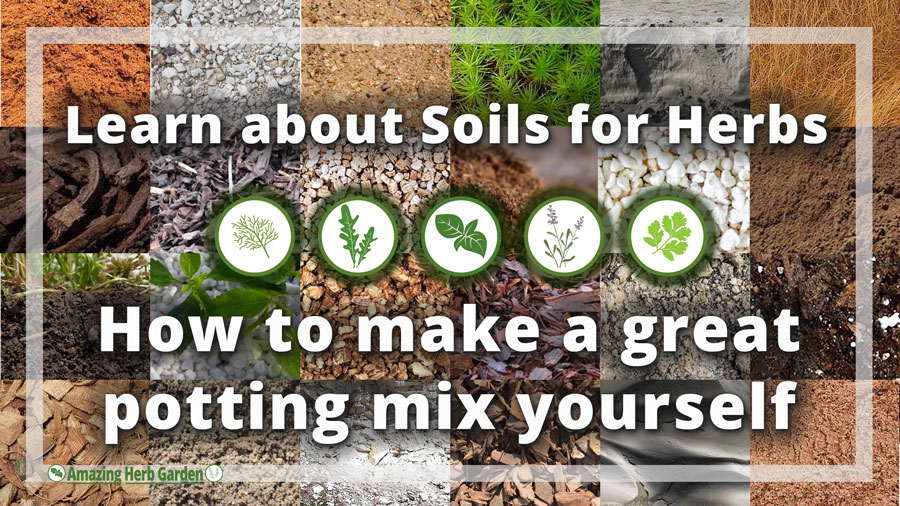
Learn to make your own potting mix for herbs yourself
One of the basic ingredients for growing plants, besides light and water, is good soil.
Every beginner herb gardener should ask the following questions about soil for herbs:
- What makes soil good for growing herbs?
- Can I use simple potting soil for the garden?
- What type of potting soil should I use for herbs in a container?
- Can I make my own potting soil mix or garden soil mix?
Using good potting or garden soil is essential for successfully growing herbs, and it is not hard at all to learn and remember what a good soil is composed of, and how you can make the ideal potting and garden soil mix yourself.
Identifying the type of soil you require for growing plants, in our case herbs, is paramount for the healthy growth of our plants.
Content
- Some basics
- About soil types
- What makes good potting soil?
- Potting soil or potting mix, what is the difference?
- Great potting soil additives for herbs
- What are soil requirements for herbs?
- The potting mix I use
- Video : How to make inexpensive potting and seed starting mix
Some basics
Ok, let's start with repeating some of the basics.
Every plant needs water, light and nutrients. Plants gather nutrients and water through their roots.
But the roots also need oxygen to stay healthy to do their job. That is why it is extremely important that both water and air are also available for the roots to use.
The importance of good drainage
Now when we speak about watering, the notion of good soil drainage is not far away. Now what is good soil drainage?
Soil drainage is the process by which water moves across, through, and out of the soil as a result of gravity. So when we water our plants and our herbs, the water has to move through, or drain, the soil in a moderate way, not too quick and not too slow either.
As water leaves the soil, air moves into the space previously occupied by the water.
We speak about well-drained soil when the soil allows water to drain at a good rate, without any water pooling. This way both air and oxygen can reach the roots.
If the soil drains to fast, the soil won't hold enough water, and the plants will not have the time and possibility to absorb the required amount of water.
When we are pouring water in a container or in a pot, you can easily understand why it is essential to have drainage holes in the bottom of the container. Without the holes in the bottom, the water will remain in the container, and the roots will be standing in water or moist all of the time.
Soil that is saturated with water, also known as water-logged, doesn't allow enough oxygen to reach the roots (oxygen deficient) resulting in "drowned" roots, that will start to rot after a while. This is the case for indoor plants in containers as well as outdoor garden plants.
Thus, it is clear now that we need well drained soil that holds water and allows air and oxygen for the roots at the same time. What kind of soil does that?
What every gardener needs to know about soil types
Let's consider the drainage characteristics for some of the types of soil that we know from our area or from our garden. The classification of soil is often based on the texture, proportions and different forms of organic and mineral compositions.
All soil contains sand, silt and clay particles, but in different proportions. Sand particles are the biggest, then silt and finally clay has the smallest particles. We have different types of soil based on the dominating size of the particles within each soil : sand, silt, clay, peat, loam and chalk types of soil
Sand soil
Sand is defined by size, being finer than gravel and coarser than silt. It is light, warm and dry, a little acidic and low in nutrients. Sand soils are composed of finely divided rock and small mineral particles.
Do you remember playing in the sand box as a child? Then you probably recall that sand soil feels gritty. Soils with high sands content break apart easily and will not form a clump when squeezed hard. Sandy soils drain easily. Besides quick drainage, sand isn't very good in holding nutrition either. Sandy soils have a high proportion of sand and little clay. It warms up easier than clay soils but suffers to hold nutrients and can dry out quickly in summer.
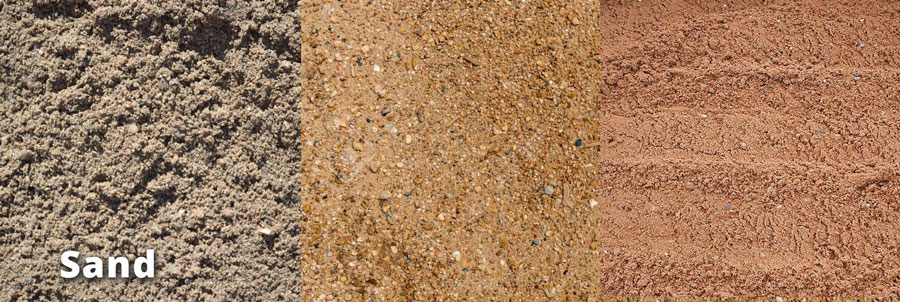
Silt soil
Silt soil is a light soil that has smaller rock and mineral particles than sand and is mainly found near rivers and lakes. Because of the smaller size of the particles silt is better in holding water and nutrients, making it more fertile and well suited for agriculture.
Pure silt soils are rare, especially in gardens. They have a slightly soapy, slippery texture and they do not clump easily. You can bind the silt particles into more stable crumbs, by adding some organic matter.
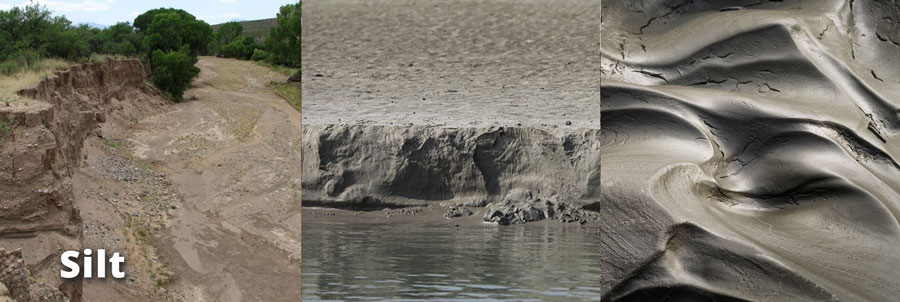
Clay soil
Clay soils (with more than 25% clay) on the other hand hold water very well (often too much water) and when wet gets very sticky. Clay soils can also hold a high amount of nutrients. This type of soil remains quite wet and cold and it tends to squeeze out the oxygen between soil particles, producing a dense texture making it very hard for roots to penetrate, or for oxygen to reach the roots of a plant. When it is dry in summer, clay soils can get very hard and crack open, what isn't ideal for the roots either.
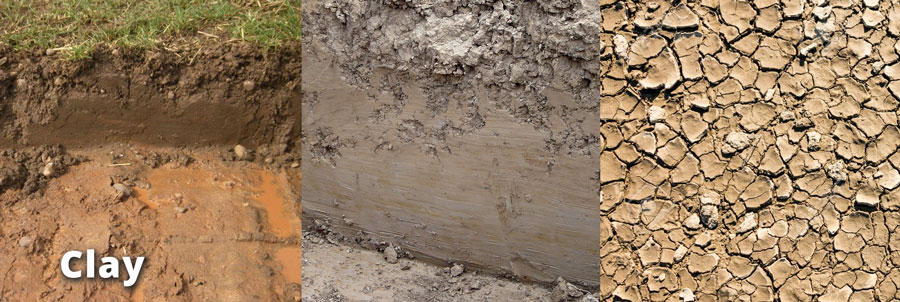
Peat soil
Peat soil is an organic complex soil that forms naturally by the incomplete decomposition of plant and animal constituents under anaerobic conditions at low temperatures. Peat soil is very often used to increase the moisture-holding capacity of sandy soils and to increase the water infiltration rate of clay soils. This type of soil is rarely found in the garden but used to improve the soil base for planting. For many years, peat was harvested to be used in potting soils to raise and grow garden plants. Due to the serious damages concerns about the damage done to the environment, peat soil is replaced by other products as an alternative.
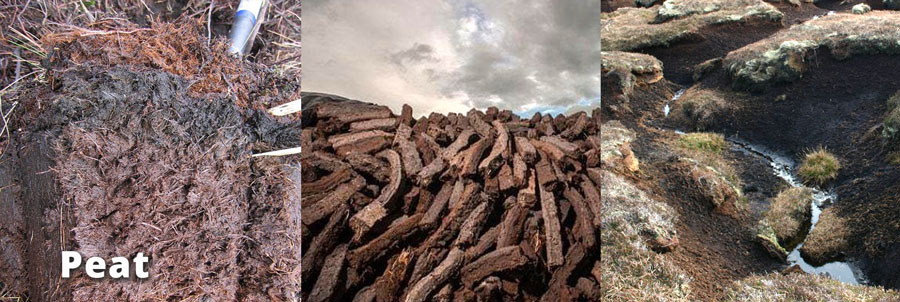
Loamy soil
Loamy soil is the combination of sand, silt, and a smaller amount of clay. It's composition, by weight, is about 40-40-20% of sand, silt and clay respectively. This mix makes a very good soil combination for agriculture, for growing vegetables and plants. The mix provides good soil characteristics we want for growing plants. The different-sized particles leave spaces in the soil for air and water to flow through. It also allows the roots to easily penetrate and grow, while feeding on the minerals in the suspended water.
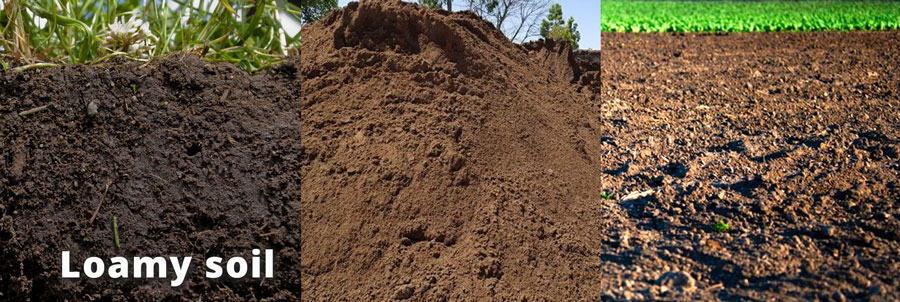
Chalk soil
Chalk soil is a layer of soil in which the soil particles are cemented together by calcium carbonate, making it highly alkaline. Chalk soil layers, formed at or below the soil surface, range from relatively loose to highly consolidated, solid rock-like soils. These alkaline soils will not support the growth of plants that require acidic soils.
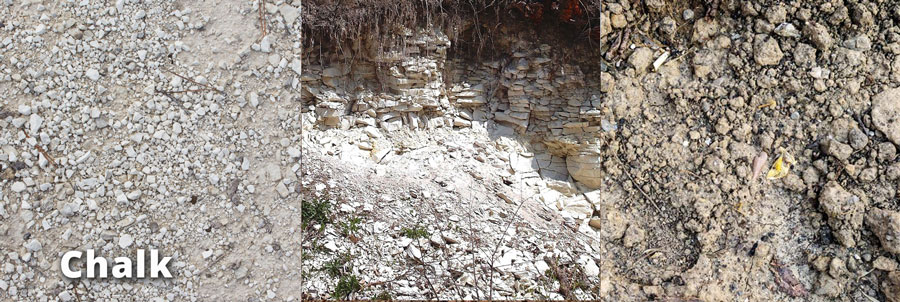
What makes good garden and potting soil?
Now that we know more about the different types of soil, it is time to ask the question what is garden soil and potting soil. And even better what is good garden and potting soil?
When we refer to the soil that we find in our garden we are often mean the topsoil. We define topsoil as the 25 cm of soil on the surface of the earth, the upper layer of dirt that we use to grow our plants, grass and vegetables.
So in order to maintain a healthy lawn or garden we need to make sure we have a high quality topsoil. The composition of topsoil changes based on location and is not the same everywhere.
Topsoil has normally a high amount of rich organic matter and microorganisms, because when plants, vegetables or other organic matter dies, it will return nutrients to the soil where it came from.
Some firms will dig up and refine topsoil to remove large particles and stones to sell rich topsoil in bulk.
In many cases topsoil is mixed with other soils, nutrients and materials for specific plants or gardening purposes. These soils are sold in bags and labeled accordingly. In this case we are talking about garden soils, eg garden soils for vegetables, for trees,…
Garden soils are preferably used outdoors in the garden, mixed with the existing garden soils in flower or garden beds. Depending on the quality of the soil, you can further improve it by mixing them up with extra organic matter such as peat moss or compost to provide a rich and enabling environment that supports vegetation and that allows the healthy breakdown of organic matter by microbes.
In many cases topsoil or garden soils are further improved and specialized for growing specific plants, often for indoors or in containers. There are various composite combinations of potting soils commercially available in specialized shops such as garden centers. Potting soils are often classified based on the materials used in making it (perlite, vermiculite, coco choir, peat moss, etc).
Potting soils, just like garden soils, are used for supporting plant vegetation, but in a more specific manner to produce better gardening results for specific conditions, such as indoor plants and plants in containers.
Garden soils for outdoor use will get easily compressed and compact when used in a container, holding water for a long time, which is not ideal for the roots of the plant. That is why we need to use a correct potting mix for our container plants, indoors and outdoors.
Potting soil or potting mix, what is the difference?
Potting mix and potting soil are 2 phrases that are often used to refer to any medium through which a plant can grow inside a container.
When you want to use the correct term or notion, then you have to speak about potting soil when you refer to any growth media which contains dirt, either partially or completely, and which is used to grow plants in a container.
Potting mix on the other hand, is any soil-less mix of materials which was specifically developed to produce better results inside containers. But as I mentioned both potting soil and potting mix are used interchangeably all the time.
Always take a good look at the label on the bags to check what you are buying. It's important that you use the potting mix or potting soil that has the right characteristics for the plants you want to grow. All high quality potting mixes have a few characteristics in common: lightweight, good drainage but with good water-holding capacity, plenty of nutrients and easy to work with.
Great potting soil additives for herbs
Let's take a look at the most well-known additives, commonly used in soils to get specific characteristics of potting soils.
Pine Bark
Dried and aged pine barks are bark particles that can be used as an additive in a potting mix. These pine bark pieces perform like thousands of little tiny sponges in the soil, absorbing moisture when wet, then slowly releasing moisture as the soil dries. And the unique particle size and shape that allows for air to circulate through the soil, providing oxygen to the roots.
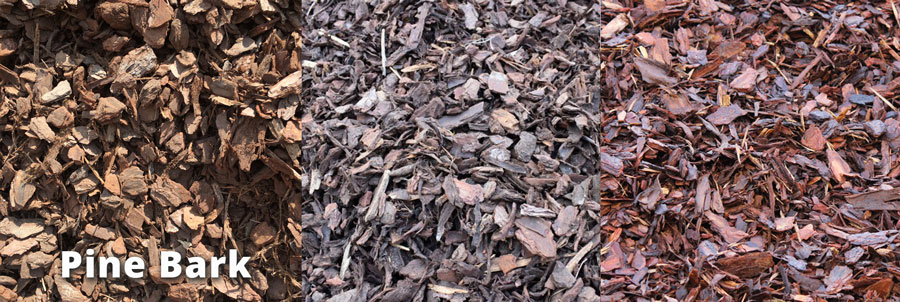
Perlite
Perlite are the small white particles you often see in potting soils. Perlite is a mined, volcanic rock. If you looked at a piece of perlite under a microscope, you would see that it's quite porous. The cavities in perlite help store nutrients and water, but it helps to drain excess water away.The benefits of perlite are manifold: it is lightweight, non-toxic, clean, disease-free, it holds up to four times its weight in water, it increases pore space in the soil allowing oxygen to the roots, it improves drainage, it is easy to work with and it has a neutral pH.
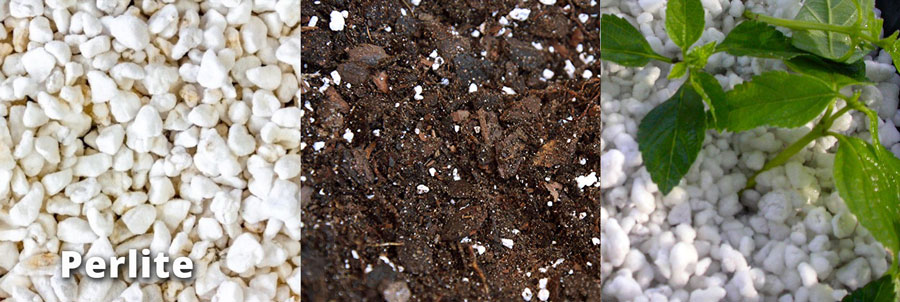
Vermiculite
Vermiculite is a natural, shiny mineral made from compressed silicate material making it absorptive and spongy. That is why it is used in potting mixes, because of its water-holding and aeration characteristics. It has a golden brown to dark brown color and comes in different sizes.
Vermiculite is best used for plants that require soil to stay damp and not dry out. For plants that love water, mixing vermiculite in the potting soil is ideal because it can absorb up to 4 times its volume when water is added.
Since vermiculite has more or less the characteristics as perlite, what do I use? The biggest relevant difference between vermiculite and perlite is the difference in drainage and aeration: Since vermiculite acts like a sponge, once mixed with soil, it will help to retain more water then perlite, meaning the soil will be moist longer. Perlite will add more drainage to the soil, allowing the soil to dry more quickly and to get more oxygen to the roots.
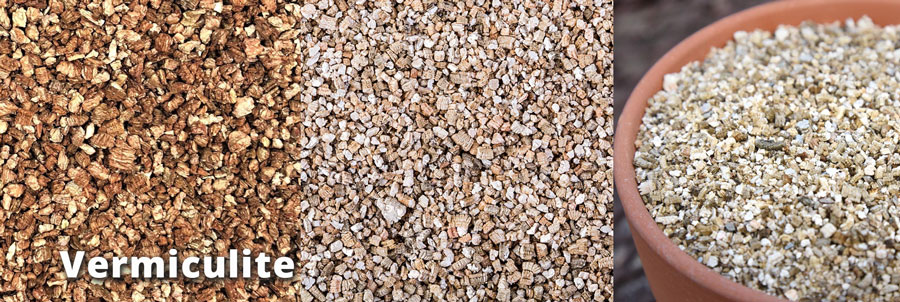
Peat Moss Sphagnum
Although the similarity in names, peat and peat moss are two different materials. It is in fact an absorbent moss that is strong in retaining water. It is very often used to add some extra light material to sand or clay soils. It helps creating a well-draining and well-aerated soil. It is however low in available nutrients. Peat moss has an acidic pH, meaning that in some cases lime may be needed to raise the pH to neutral or more alkaline levels. And peat moss is probably the most used component in potting soils. I is a widely available and inexpensive material that takes a long time to break down.
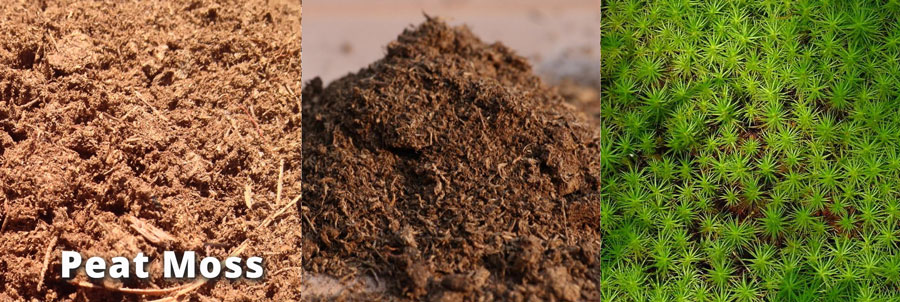
Coco Coir – Coco Peat – Coco Chips
Coir, or coconut fibre, is a natural fibre extracted from the husk (outer shell) of coconut and used in products such as floor mats, doormats, brushes and mattresses. The brown coir, extracted from the ripe coconut, is also used in potting mixes.
Coco peat are small natural fibre particles, created during the processing of coir fibre, made out of coconut husks, while separating the coconut fibers.
It must not be confused with coir pith, or formerly also named coco peat sometimes, which is the powdery material resulting from the processing of the coir fibre in small particles.
The husks of the coconut are also cut in smaller uniform pieces, washed and dried for horticulture purposes. When coco coir, chips and peat are combined, they can make an optimal drainage and aeration medium for growing plants. Even mixed with other soils, the coir will create air pockets into the growing medium, which is a good thing because this allows more oxygen to the roots.
Coconut coir is considered to be a good substitute for sphagnum (peat moss) and peat because it is widely available and environmentally friendly. Coco peat is highly absorbent, holding around 25% more water than most peat. Coir is also slightly alkaline.

Compost
Compost is a very dark coloured matter that results from the recycling and breaking down of organic matter. It is used to enrich the soil with micro-organisms, mineral elements, and humus. Compost also holds water very well and its particle size will help with oxygen exchange.
Fertilizers
All plants need three macronutrients in order to grow: nitrogen, phosphorous, and potassium. When creating your own potting soil, you have to check if enough of these nutrients are available.
Lime
Lime is made from ground limestone rock, which naturally contains calcium carbonate and magnesium carbonate. When lime is added to soil, it will increase the soil's pH, making the soil less acidic and more alkaline.
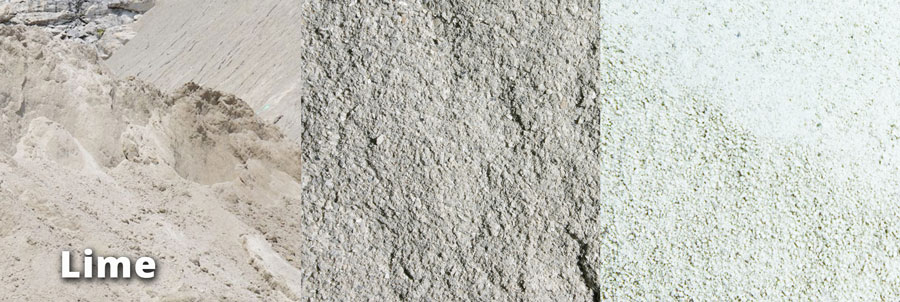
Bone Meal
Bone meal is a meal or powder made from animal bones and is used as a fertilizer to increase phosphorus in the garden soil. Phosphorus is an essential element for plants to flower.
What are the soil requirements for herbs?
Although herbs are generally easy to grow, there are some must-have requirements for growing herbs in the garden and in container:
- the ability to maintain moisture (but not too much)
- enough nutrients available in the soil (herbs don't ask for much nutrients)
- the soil has to drain very well
Outside in the garden you may need to improve the drainage if you have hard clay soil. You can do this for example by putting gravel (small stones) below the topsoil to improve the drainage of the soil. Next you want to loosen up the topsoil (30 cm) by spading the soil adding some organic materials that drains well. This will break up large clumps of soil making a much better place for roots to grow, which is really important with herbs. It also helps to oxygenate the soil.
In containers, we need a potting mix that holds the moisture in but also drains very well. Drainage is paramount for herbs to thrive!
I don't advise to use the soil from your garden to fill your herb containers, but to make your own potting soil with coco coir, compost, and either perlite.
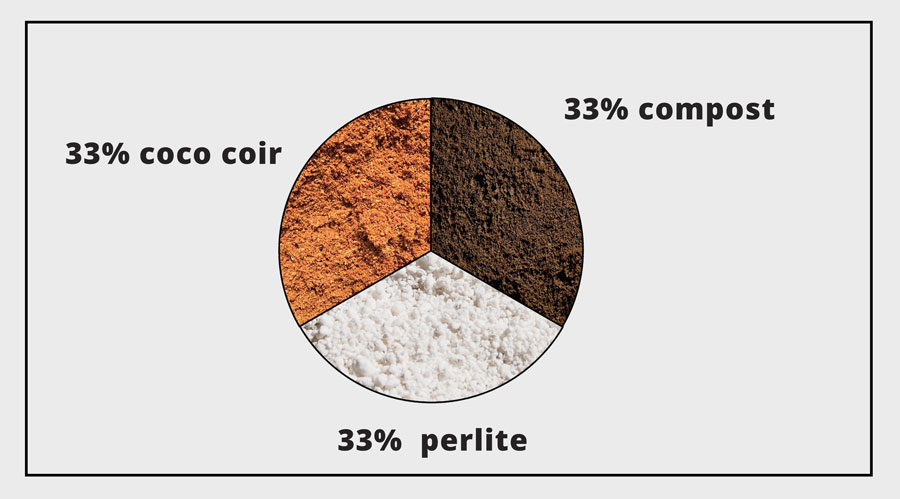
This is the CoCo Peat I am using today. The price for a pack of 10 litres is less than 1 euro (about $ 1,00).
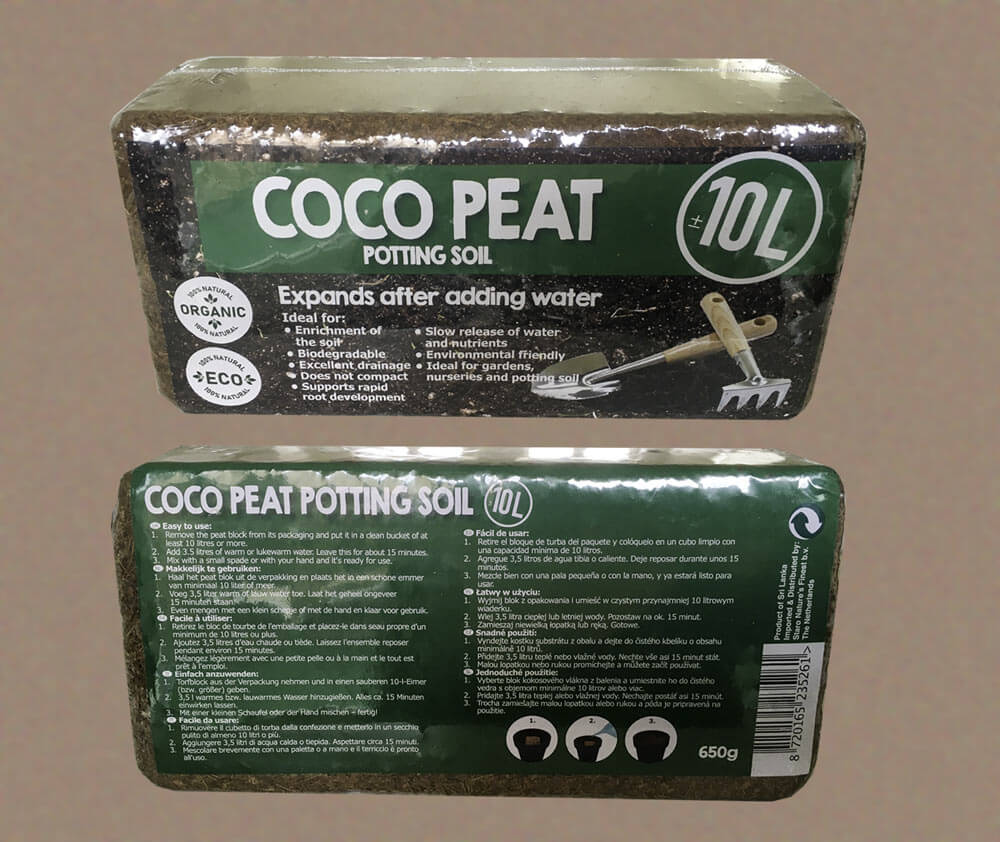
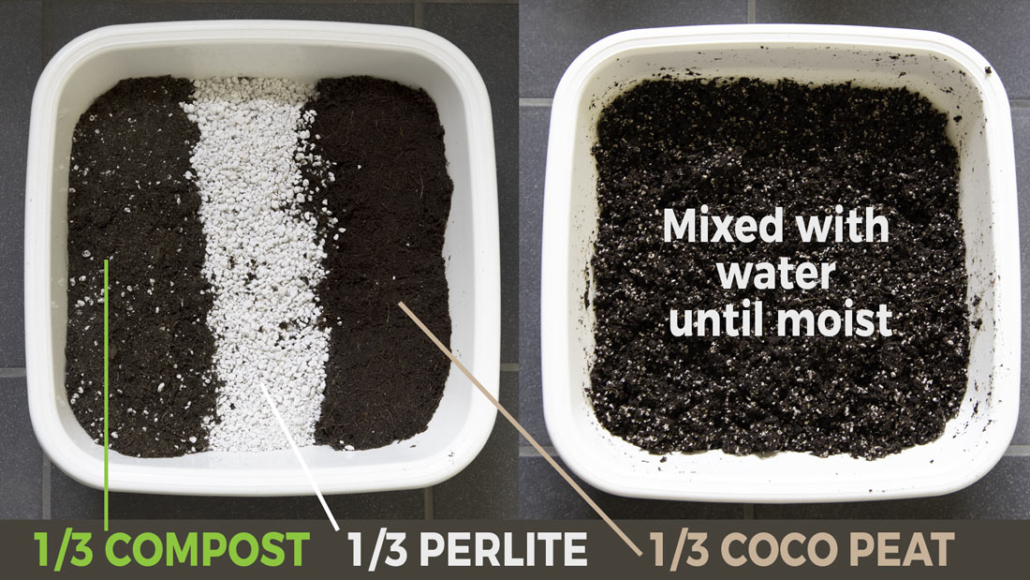
Ideal is when you have mixed it and take it in your hand and clump it together, it falls apart. If may not clump together as if it was a mud ball.
Video : How to make inexpensive potting and seed starting mix :
Join the community
If you are looking to grow an amazing herb garden, I strongly recommend signing up for my FREE Herb Garden Tips. We want to ensure your success by sharing our tips and tricks with you for growing herbs.
Leave a comment
Share on your Pinterest
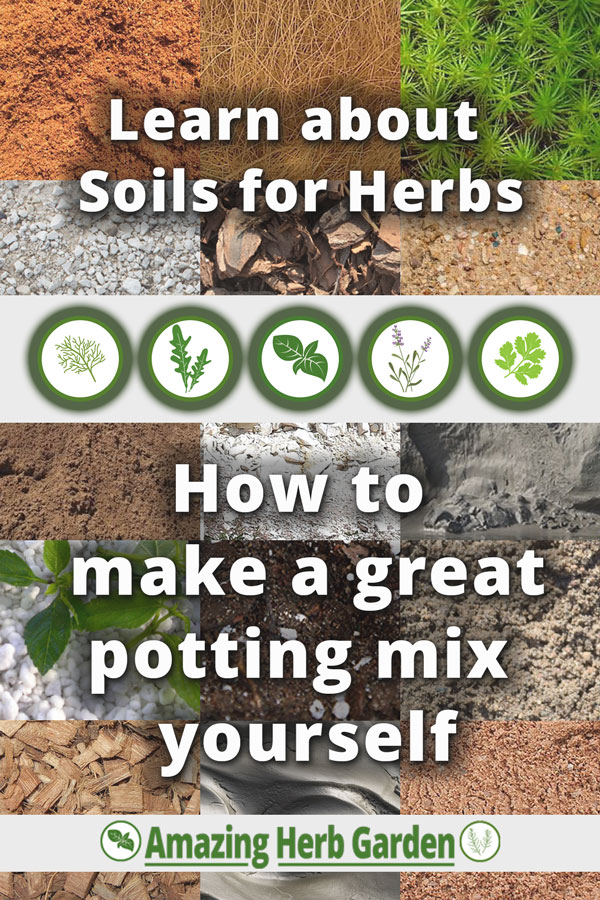
What Is The Best Dirt To Use In Container Gardening For Herbs
Source: https://www.amazingherbgarden.com/best-soil-for-herbs-how-to-make-your-own-potting-mix/
Posted by: yudeppoccanot85.blogspot.com

0 Response to "What Is The Best Dirt To Use In Container Gardening For Herbs"
Post a Comment